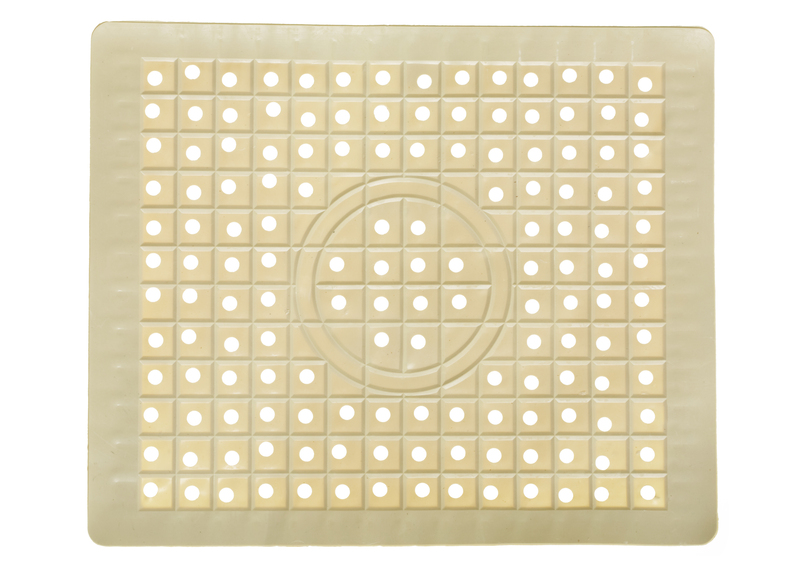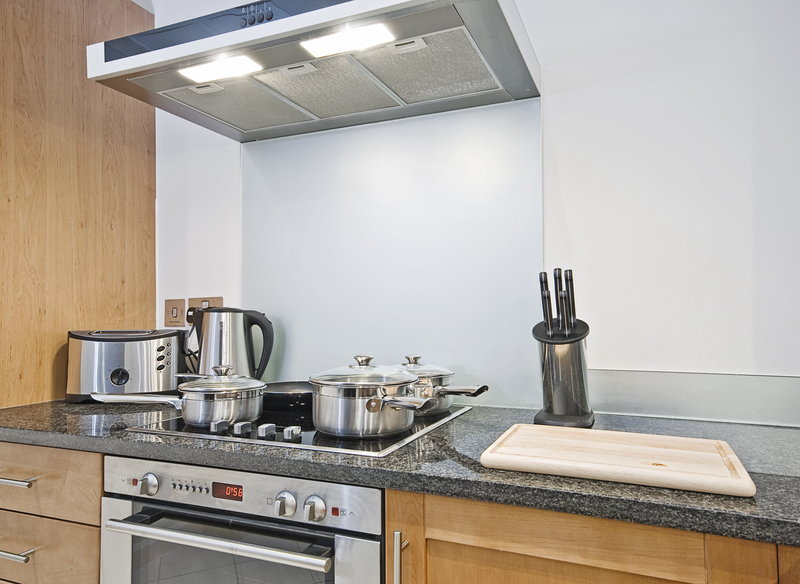Achieving Streak-Free Windows: The Essential Guide
Posted on 22/05/2025
Achieving Streak-Free Windows: The Essential Guide
Who doesn't crave sparkling, streak-free windows that let the sunshine in and brighten up your entire living space? Unfortunately, what should be a straightforward cleaning task often turns into a source of endless frustration. Smears, spots, lint trails, and cloudy marks frequently remain after countless wiping sessions. If you've ever wondered how to achieve flawless, crystal-clear window panes every time, you're in the right place!
This comprehensive guide will provide you with expert tips, top product recommendations, and essential techniques to ensure streak-free, gleaming glass all year round. Let's dive into the science, secrets, and step-by-step process for perfectly clean windows - every single time.
Why Streak-Free Windows Matter
- Enhance Natural Light: Clean windows maximize sunlight, making interiors brighter and more inviting.
- Boost Curb Appeal: Pristine glass instantly improves a property's exterior aesthetic.
- Improve Mood & Productivity: Studies show brighter spaces positively impact wellbeing and concentration.
- Prolong Window Lifespan: Regular cleaning eliminates abrasive dirt and corrosive residue, protecting frames and glass.
Streaks can make even high-quality windows look aged and neglected. Knowing how to achieve streak-free glass means you'll always enjoy the view and reap both functional and aesthetic benefits.

Understanding What Causes Window Streaks
Why do unsightly streaks appear in the first place? Even with effort and expensive products, residues often remain. Here are the primary culprits:
- Incorrect Cleaning Solutions: Many commercial glass cleaners leave behind surfactants or aren't fully removed.
- Using Dirty or Linty Cloths: Paper towels and standard cotton rags often shed fibers or redistribute dirt.
- Inadequate Drying: Allowing solution to air dry can create mineral deposits.
- Overuse of Product: Excess cleaner can be difficult to fully buff off, resulting in hazing.
- Hard Water: Water containing minerals like calcium leaves behind spots and smears on glass surfaces.
To consistently achieve streakless windows, addressing these underlying causes is essential. That starts with choosing the right tools and techniques.
The Best Tools for Streak-Free Window Cleaning
Using the proper equipment is half the battle won. Here are essential tools every streak-free enthusiast should have:
1. Microfiber Cloths
- Why Microfiber? Finely woven fibers trap dirt without scratching glass and leave no lint - a must for streakless results.
- Tip: Use a separate set of cloths for washing and drying to prevent residue transfer.
2. Professional Squeegee
- Even Pressure, No Smears: Squeegees provide uniform removal of solution, especially important for large windows.
- Removable Blade: Replace rubber blades regularly for ultra-smooth passes.
3. Gentle Scrubbing Pad
- Remove stubborn marks and built-up grime before your finishing wipe. Avoid abrasive pads that might scratch the surface.
4. Bucket and Spray Bottle
- Allows you to mix and apply your own window cleaning solution.
5. Lint-Free Dry Towels
- Essential for drying window edges and catching drips to guarantee spotless, streak-free glass.
Choosing the Ideal Glass Cleaner
There are many products on the market promising a streak-free window finish, but not all are created equal. Here are your main options:
Commercial Glass Cleaners
- Many contain surfactants that can accumulate and cause window streaks.
- Look for ammonia-free formulations for tinted or treated windows.
DIY Window Cleaning Solutions
- Vinegar and Water: Mix 1 part distilled white vinegar to 3 parts water. It's cheap, effective, and leaves minimal residue.
- Soap and Water: A few drops of dish soap in a gallon of water works well for very dirty glass but be sure to rinse thoroughly.
- Alcohol-Based Cleaners: Isopropyl alcohol evaporates fast, limiting the risk of spotting, making it great for final polishing.
Pro Tip: Always use distilled water in your mixtures if possible -- it's free from minerals that can cause white spots.
The Step-by-Step Process for Streak-Free Window Cleaning
This section presents a failproof, professional-grade approach to achieving streak-free results on windows of any size.
-
Gather All Supplies
- Microfiber cloths (wash and buff)
- Squeegee (with fresh rubber blade)
- Bucket or spray bottle with cleaning solution
- Soft scrub pad (for stubborn spots)
- Lint-free absorbent towel
-
Remove Dust and Debris
- Wipe window frames and sills first to prevent dirt from splashing onto clean glass.
- If needed, use a vacuum or soft-bristle brush to clear loose dirt and spider webs.
-
Apply Your Chosen Cleaner
- Spray the window or apply solution with a damp cloth. Don't oversaturate - enough to loosen dirt, not soak the area.
-
Loosen and Remove Tough Marks
- Use a gentle scrubber or non-scratch pad for spots like bird droppings or bug splatter.
-
Squeegee the Glass
- Start at the top corner. Draw the squeegee horizontally or in an S-pattern, overlapping strokes slightly.
- Wipe the blade with a microfiber cloth after each pass to prevent smearing.
-
Buff & Detail
- Use a dry, lint-free cloth to buff the glass and pick up any remaining streaks.
- Pay attention to corners and edges, where solution may accumulate.
-
Final Touches
- Dampen cloth with pure isopropyl alcohol for a final polish if stubborn streaks persist.
Pro Tips: Avoiding Streaks Every Time
- Clean on a Cloudy Day: Direct sunlight dries solutions quickly, causing streaks. Overcast days are ideal for window cleaning.
- Work Top to Bottom: Prevents drips from marking cleaned areas below.
- Use Clean Cloths for Each Stage: Dedicated cloths prevent cross-contamination.
- Rotate Your Squeegee Blade: A nicked or worn blade leaves lines. Replace as needed for consistent streak-free finishes.
- Buff in Circles, Not Lines: Gentle, circular motions reduce streaks when drying and polishing.
Common Window Cleaning Mistakes to Avoid
- Skipping Window Frames: Leaving frames dirty will lead to drips and new dirt on your glass after cleaning.
- Using Too Much Cleaner: More isn't better! Excess leaves a film that's hard to remove without streaking.
- Using Hard Water: Minerals in tap water are a frequent cause of spots and streaks when glass dries. Opt for distilled if possible.
- Washing in Full Sun: Rapid evaporation increases streak risk enormously.
- Wrong Cloths: Cotton rags and paper towels leave fiber or lint that cause "shadow" streaks you only see in sunlight.
Seasonal Tips for Streak-Free Exterior Windows
Depending on the time of year, achieving crystal-clear outdoor windows may take extra planning:
Spring & Summer
- Windows collect pollen, plant sap, bugs, and dust. Pre-rinse panes with a hose before washing.
- Hart to reach? Try extension poles with squeegee attachments and wash on an overcast morning.
Autumn
- Clean away leaf debris and rain streaks to prevent stains.
Winter
- Use window cleaners labeled "frost resistant" to avoid freezing on contact.
- Quickly buff with a dry cloth for a streak-free finish.
The Impact of Hard Water and How to Counter It
Hard water is notorious for leaving marks, even if your windows looked perfect while wet. Here's how to win the battle:
- Use Distilled Water: Eliminate mineral content from your cleaning process.
- Vinegar Efficacy: Acetic acid dissolves mineral spots. Double up on vinegar for particularly tough cases.
- Dry Immediately: Don't allow droplets to dry in place! Squeegee and buff thoroughly.
Should You Clean Both Sides of Your Windows?
For truly pristine, streak-free glass, clean both inside and out. This also helps identify if persisting marks are on the interior or exterior surface. For best results:
- Use an alternating technique (vertical on one side, horizontal on the other) to spot missed streaks quickly.
- Open windows fully, if possible, to reach the edges where grime accumulates.
Are Professional Window Cleaners Worth It?
If streak-free perfection on large, high, or multi-pane windows feels overwhelming, hire a professional. Benefits include:
- Advanced Tools: Pros use purified water systems and industrial-grade squeegees.
- Experience: Speed and technique that comes with years of practice.
- Safety: No risk of falls or chemical mishaps if tackling second stories or higher.
However, for typical household windows, with the right tools and these proven tips, you can achieve results rivaling the pros at home--and save money!
Maintaining Your Sparkling, Streak-Free Finish
How often should you clean your windows?
- Interior windows: Every 2-3 months (more often in kitchens/bathrooms).
- Exterior windows: At least twice yearly, but quarterly is ideal for high-traffic areas or after major pollen seasons.
- Spot-clean: Immediately address fingerprints, smudges, or bird droppings to prevent hard-to-remove marks.
Regular light maintenance saves you time and effort each session and keeps your windows looking their best year-round.
Key Takeaways: Your Streak-Free Window Checklist
- Choose microfiber cloths and a professional squeegee for lint-free results.
- Avoid cleaning in bright sunlight; opt for cloudy days or shade.
- Use distilled water, especially in hard water areas, to prevent mineral spots.
- Clean top to bottom, inside and out, finishing with a thorough buff.
- Store a dedicated window cleaning kit for easy, regular maintenance.
Remember: Achieving streak-free windows is all about technique, patience, and the right tools. With these essential tips, you'll enjoy beautifully clear windows and a brighter, more inviting home--every single day!

Frequently Asked Questions About Streak-Free Window Cleaning
How do I prevent streaks when cleaning windows?
Use a clean microfiber cloth, wipe in a consistent motion, and avoid overwetting. Always dry and buff the glass before the cleaner dries on its own.
What's the best homemade window cleaner?
A mixture of vinegar and distilled water (1:3 ratio) is effective, affordable, and helps prevent streaks and spots.
Can I use newspaper for streak-free cleaning?
Traditional advice suggests it, but newspapers today often use soy-based inks that can transfer to glass. Microfiber is the safer, cleaner choice.
Why are my windows streaky after cleaning?
Common reasons include too much cleaner, dirty cloths, hard water, or improper drying. Follow each step outlined above for flawless results.
Final Thoughts
Shining, streak-free windows are more than just a finishing touch--they transform your home's atmosphere, improve your view, and maximize natural light. By understanding what causes streaks and applying the proven techniques from this essential guide, you'll achieve the sparkling, clear results you deserve every time.
Ready to bask in streakless glass? Assemble your cleaning kit, pick a cloudy day, and let the sunshine pour through your newly pristine windows!



